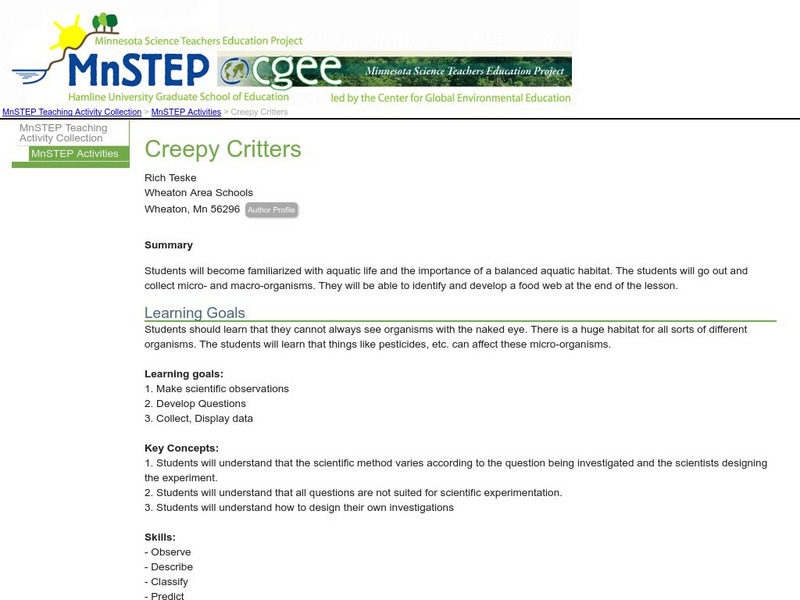Curated OER
Adding More
In this addition worksheet, students solve six problems in which objects in a set are counted and additional objects are added to these, according to directions. Students write how many in all.
Curated OER
Paramecium
In this paramecium learning exercise, students sharpen their science skills as they color the parts of a paramecium according to the instructions and then respond to 15 analysis questions.
Curated OER
The Living Environment
Students explore the cycles of an ecosystem. In this environmental science lesson, students work in groups to research the nitrogen cycle, the water cycle, or the oxygen-carbon dioxide cycle. Students prepare a PowerPoint or other...
Curated OER
Raindrops Keep Burning On My head
Middle schoolers investigate the effects and causes of acid rain. They test pH of household items to familiarize themselves with pH scale and compare that information with acid rain solutions. They investigate impact of acid rain via...
Curated OER
My Biotic Creation
Eighth graders explore different ecosystems. In this ecosystem survival lesson conditions lesson students create their own fictional creature.
Curated OER
Human Impact on the Environment
In this environmental science worksheet, students complete a crossword puzzle with 26 questions about human impact on the environment.
Curated OER
Water Pollution
Students explore the causes of water pollution. In this environmental lesson plan, students conduct experiments with natural filtration systems.
Curated OER
Eutrophication Experiments
Observe two different water samples and write down observations. Write a paragraph which predicts the relative amounts of nutrients, nitrates, and phosphates in the water samples. Compare water samples under a microscope.
Curated OER
Ecology - Ecosystem
Third graders research ecosystems, the work of ecologists, John Muir's contribution to the environment and an endangered species of their choice. They read books, participate in discussions, and write reports.
Curated OER
"Habitats"
Students complete a unit of lessons on animals and animal conservation. They observe a square meter of ground outside the school, set up a model environment, analyze an owl pellet, grow bread mold, and explore various websites.
Science Education Resource Center at Carleton College
Serc: Creepy Critters
Students learn about aquatic life and the importance of a balanced aquatic habitat by collecting micro- and macro-organisms. By the end of the instructional activity, they will be able to identify and develop a pond food web.










